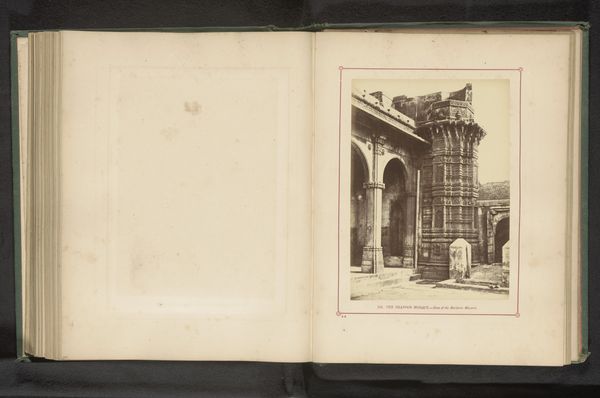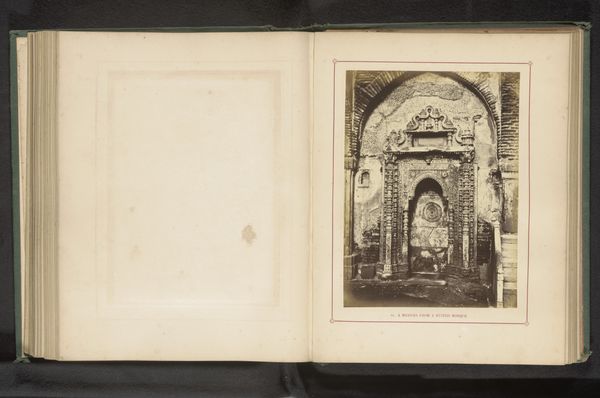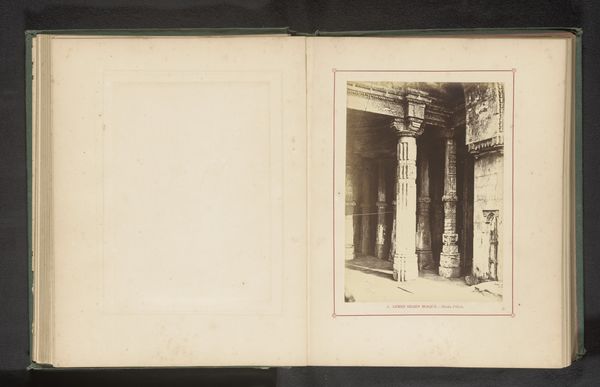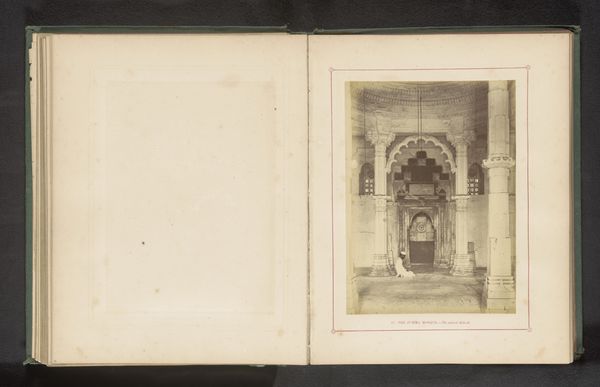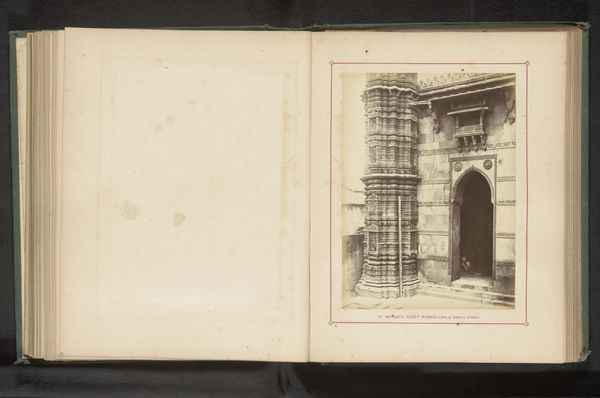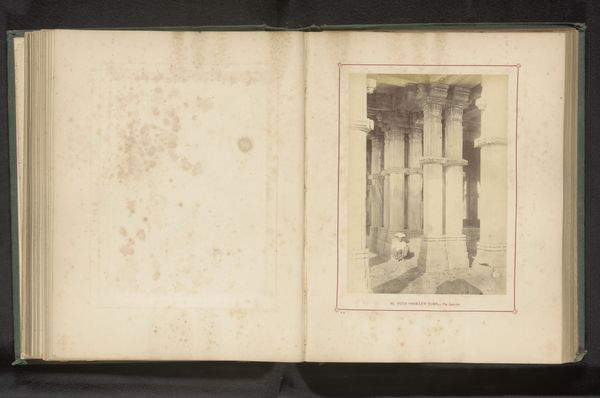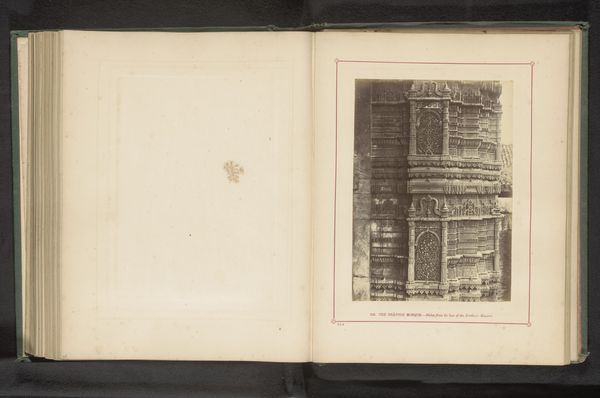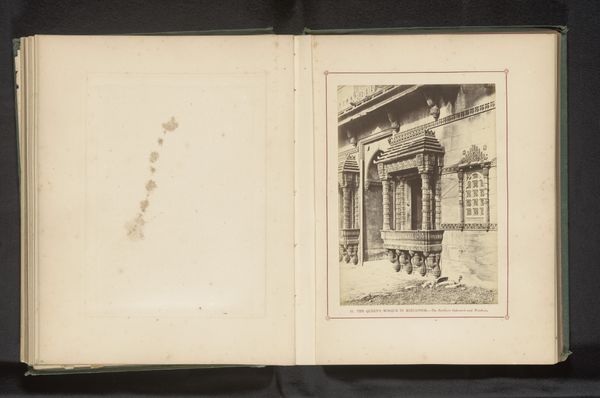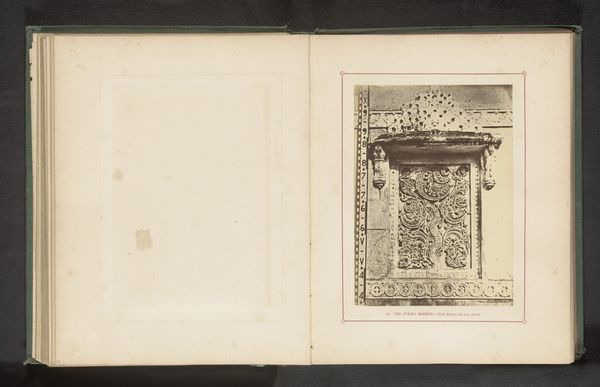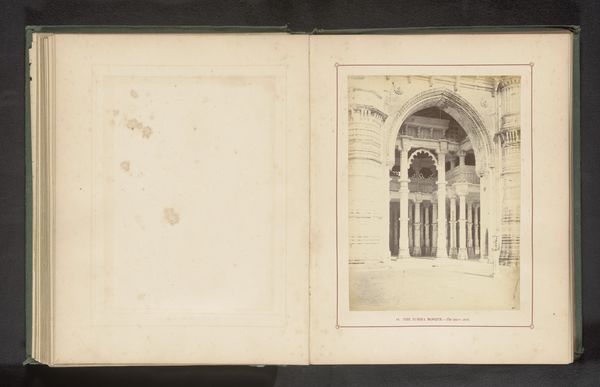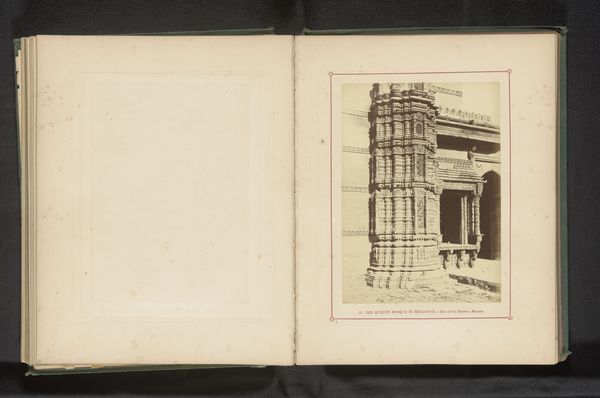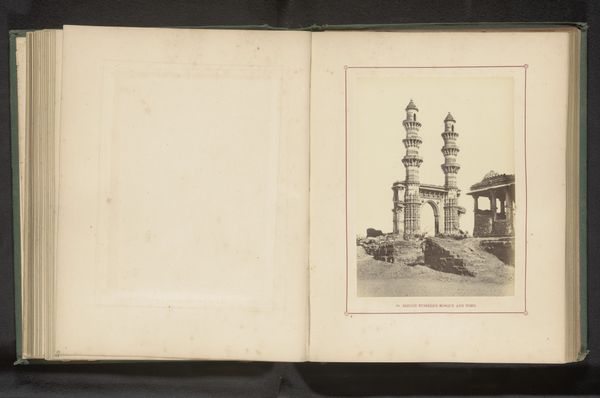
print, photography, albumen-print, architecture
# print
#
landscape
#
figuration
#
photography
#
ancient-mediterranean
#
islamic-art
#
albumen-print
#
architecture
Dimensions: height 201 mm, width 148 mm
Copyright: Rijks Museum: Open Domain
Curator: Thomas Biggs created this albumen print, "Interior of the Dada Harirbron in Ahmedabad," sometime before 1866. It offers a compelling glimpse into 19th-century India through the lens of colonial-era photography. Editor: The subdued tones create an atmosphere of serene solemnity, almost meditative. The structural components – the pillars, arches – seem to recede endlessly, pulling the eye deep into the space. Curator: Exactly. The photograph is part of a larger narrative concerning the British presence in India, depicting architectural wonders with a somewhat ethnographic perspective, a trend emblematic of the colonial gaze, constructing and classifying non-Western subjects. The subject appears to be some form of Muslim scholar. Editor: And observe how Biggs uses the receding architectural elements to establish a visual hierarchy and symmetry; his strategic placement of light and shadow enhances the sense of depth and structure within this three-dimensional space, especially the contrast between the detailed foreground and fading background. Curator: But let's also consider the context of water architecture within Islamic societies. These spaces were integral for ritual cleansing, community gathering, and social mobility, reflecting values tied to egalitarianism. By photographing this interior, what narratives of power and control is Biggs capturing, perpetuating? The colonial presence often exoticized and appropriated these cultures. Editor: A fascinating perspective! It reminds me how crucial understanding formal organization and structure of artistic and architectural form is because they help reveal cultural contexts – even ones of subjugation. The light source and careful arrangement of receding rectangular motifs generates an echoing depth. Curator: Indeed. This image opens a critical lens onto colonial India, sparking discussions about visuality, representation, and power dynamics in intersection with religious and cultural contexts. It highlights photography's double edge – as both an aesthetic medium and as tool in reinforcing power structures. Editor: The way Biggs manipulates tonal value to articulate architectural detail transforms it from mere structure into a spatial experience. It’s a masterclass in the subtle power of form!
Comments
No comments
Be the first to comment and join the conversation on the ultimate creative platform.
